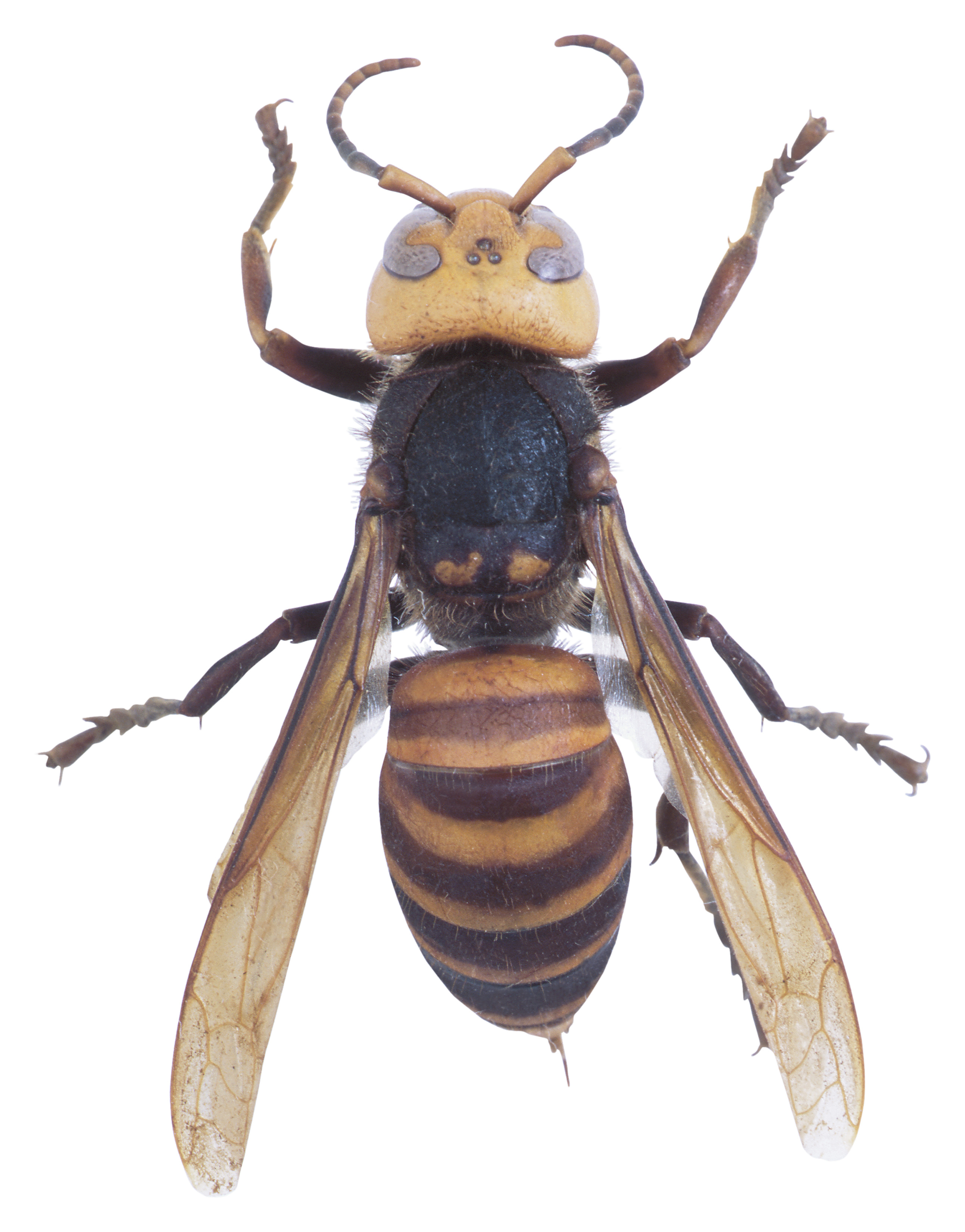Are wasps poisonous. Wasp Stings: Symptoms, Treatments, and Remedies for Reactions
What are the symptoms of a wasp sting. How can you treat a wasp sting at home. When should you seek medical attention for a wasp sting. What remedies help alleviate wasp sting pain and swelling.
Understanding Wasp Stings and Their Venom
Wasp stings are a common occurrence, especially during warmer months when outdoor activities increase. While wasps use their stingers primarily for self-defense, encounters with humans can lead to painful stings. Unlike bees, wasps can sting multiple times, as their stingers are not barbed and do not detach after use.
Wasp venom contains a complex mixture of proteins and peptides that cause pain and inflammation. The primary components include:
- Phospholipases: Enzymes that break down cell membranes
- Hyaluronidase: An enzyme that helps spread venom through tissues
- Histamine: A compound that triggers inflammation and itching
- Kinins: Peptides that cause pain and swelling
The severity of a wasp sting reaction depends on various factors, including the individual’s sensitivity to the venom and the number of stings received.

Common Symptoms of Wasp Stings
Most people experience localized reactions to wasp stings. These typically include:
- Sharp, burning pain at the sting site
- Redness and swelling around the affected area
- Itching or tingling sensation
- A raised welt with a small white mark at the center
How long do wasp sting symptoms usually last? For most individuals, these symptoms subside within a few hours to a day. However, some people may experience more pronounced or prolonged reactions.
Large Local Reactions to Wasp Stings
Some individuals may develop what’s known as a “large local reaction” to wasp stings. This type of reaction is characterized by:
- Extreme redness and swelling extending beyond the sting site
- Swelling that continues to increase for 2-3 days after the sting
- Possible nausea and vomiting
While large local reactions can be alarming, they generally do not indicate a life-threatening allergy. These reactions typically resolve on their own within a week, though they may cause significant discomfort.
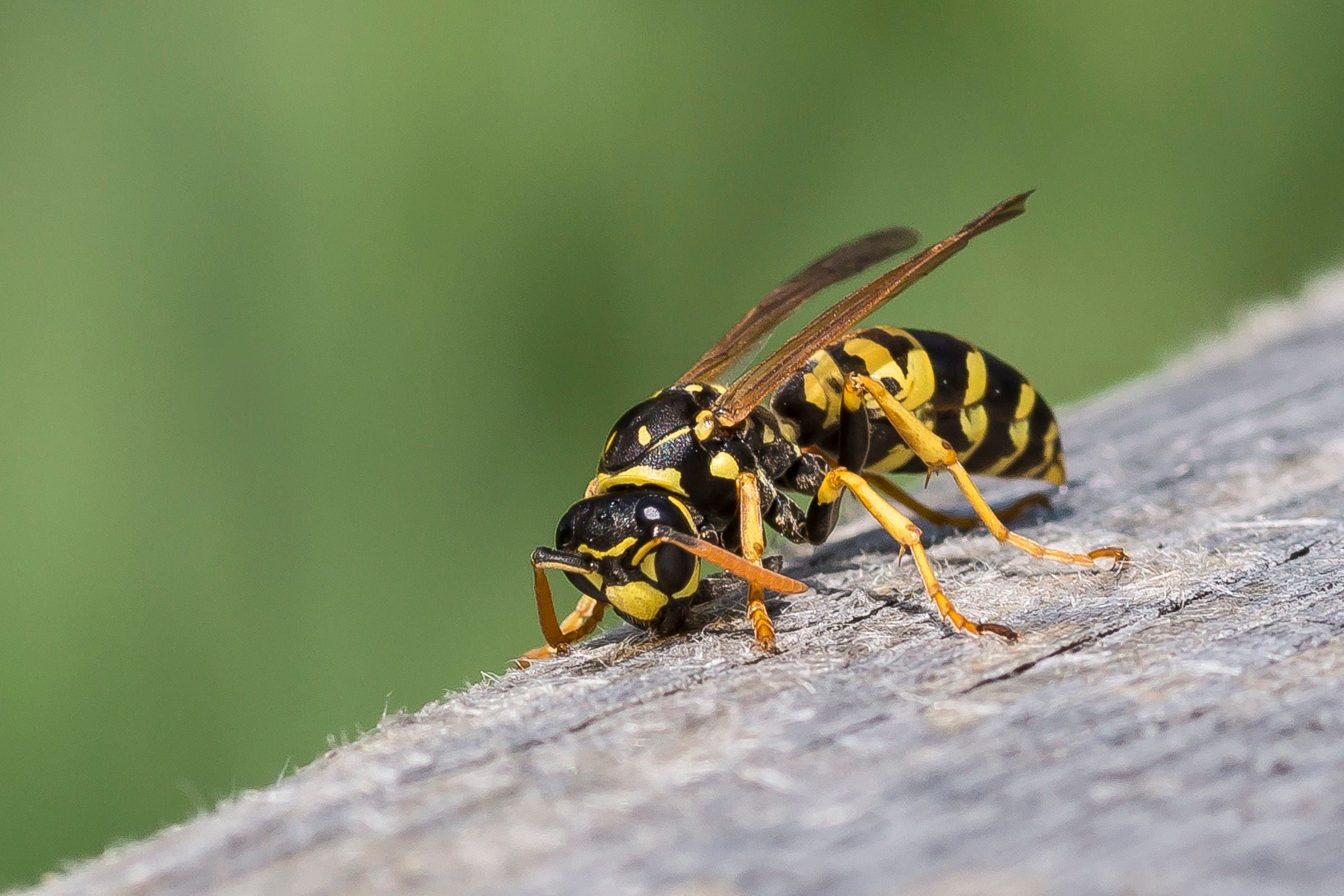
Treating Wasp Stings at Home
For mild to moderate wasp sting reactions, home treatment is often sufficient. Here are some effective steps to manage wasp sting symptoms:
- Clean the area: Wash the sting site with soap and water to remove any remaining venom.
- Apply a cold compress: Use ice or a cold pack wrapped in a cloth to reduce swelling and numb the pain.
- Elevate the affected limb: If the sting is on an arm or leg, elevate it to help minimize swelling.
- Use over-the-counter pain relievers: Acetaminophen or ibuprofen can help alleviate pain and inflammation.
- Apply a baking soda paste: Mix baking soda with a small amount of water and apply to the sting site to neutralize the venom and reduce itching.
Are there any natural remedies for wasp stings? Several natural remedies may help soothe wasp sting symptoms:
- Apple cider vinegar: Apply diluted apple cider vinegar to help neutralize the venom and reduce pain.
- Honey: Apply a small amount of honey to the sting site to reduce inflammation and provide antibacterial benefits.
- Aloe vera gel: Use fresh aloe vera or an aloe-based product to cool the skin and reduce swelling.
- Plantain leaves: Crush fresh plantain leaves and apply as a poultice to draw out venom and reduce pain.
Recognizing and Responding to Severe Allergic Reactions
While most wasp sting reactions are mild, some individuals may experience severe allergic reactions, known as anaphylaxis. This is a potentially life-threatening condition that requires immediate medical attention.

Symptoms of anaphylaxis may include:
- Difficulty breathing or wheezing
- Swelling of the face, throat, or tongue
- Dizziness or fainting
- Rapid or weak pulse
- Nausea, vomiting, or diarrhea
- Hives or itching in areas beyond the sting site
How quickly can anaphylaxis develop after a wasp sting? Anaphylactic reactions typically occur within minutes to an hour after the sting. If you or someone around you shows signs of anaphylaxis, it’s crucial to act quickly:
- Call emergency services immediately
- Administer epinephrine (EpiPen) if available
- Keep the person calm and lying down with legs elevated
- Monitor breathing and perform CPR if necessary
Individuals with known severe allergies to wasp stings should always carry an epinephrine auto-injector and wear a medical alert bracelet.
Prevention Strategies for Wasp Stings
Preventing wasp stings is the best way to avoid potentially dangerous reactions. Here are some effective strategies to minimize your risk of being stung:
- Avoid wearing bright colors or floral patterns that may attract wasps
- Keep food and drinks covered when outdoors
- Avoid wearing strong perfumes or scented products
- Be cautious around areas where wasps are likely to nest, such as eaves, attics, and hollow trees
- Wear closed-toe shoes and long sleeves when working in the yard
- Use insect repellents containing DEET or picaridin
What should you do if you encounter a wasp? If you come across a wasp, remain calm and move away slowly. Avoid swatting at the insect, as this may provoke it to sting.

Medical Treatments for Wasp Sting Reactions
While most wasp stings can be treated at home, certain situations may require medical intervention. Doctors may prescribe the following treatments for more severe reactions:
- Oral antihistamines: To reduce itching and swelling
- Oral corticosteroids: For managing large local reactions or persistent symptoms
- Epinephrine auto-injector: Prescribed for individuals with known severe allergies
- Immunotherapy (allergy shots): For those with recurrent severe reactions to wasp stings
When should you seek medical attention for a wasp sting? Consult a healthcare provider if:
- You experience symptoms of anaphylaxis
- You have a large local reaction that doesn’t improve after a few days
- The sting site shows signs of infection (increased redness, warmth, or pus)
- You’ve received multiple stings, especially if you’re a child or elderly
Long-term Management for Wasp Sting Allergies
For individuals with severe allergies to wasp stings, long-term management is crucial. This may involve:
- Allergy testing: To confirm the specific allergy and identify cross-reactivity with other insects
- Venom immunotherapy: A series of injections to desensitize the immune system to wasp venom
- Regular check-ups with an allergist: To monitor the effectiveness of treatment and adjust as necessary
- Carrying emergency medication: Always having an epinephrine auto-injector on hand
How effective is venom immunotherapy for wasp sting allergies? Venom immunotherapy has been shown to be highly effective, reducing the risk of severe allergic reactions by up to 98% in treated individuals.
Myths and Facts About Wasp Stings
There are several misconceptions about wasp stings that can lead to improper treatment or unnecessary worry. Let’s examine some common myths and the facts behind them:
Myth: Wasps die after stinging, like bees
Fact: Unlike honey bees, wasps can sting multiple times without dying. Their stingers are smooth and do not detach from their bodies.
Myth: Applying meat tenderizer to a wasp sting neutralizes the venom
Fact: While meat tenderizer contains enzymes that may help break down some components of wasp venom, there’s limited scientific evidence to support its effectiveness. Stick to proven remedies like ice and antihistamines.
Myth: If you’re allergic to bee stings, you’re automatically allergic to wasp stings
Fact: While there can be cross-reactivity between bee and wasp venom allergies, they are distinct. Some people may be allergic to one and not the other. Proper allergy testing is necessary to determine specific sensitivities.
Myth: You can build immunity to wasp stings by getting stung regularly
Fact: Deliberately getting stung is dangerous and not recommended. For those with severe allergies, controlled venom immunotherapy under medical supervision is the safe way to build tolerance.
Understanding these facts can help you respond more appropriately to wasp stings and avoid potentially harmful practices.
Environmental Impact and Ecological Role of Wasps
While wasps can be a nuisance and even a danger to humans, it’s important to recognize their significant role in ecosystems. Wasps contribute to biodiversity and environmental balance in several ways:
- Pollination: Many wasp species are important pollinators for various plants
- Pest control: Predatory wasps help control populations of other insects, including agricultural pests
- Seed dispersal: Some wasp species aid in the dispersal of seeds from certain plants
- Food source: Wasps serve as a food source for birds, reptiles, and other insects
How can we balance human safety with the ecological benefits of wasps? Here are some environmentally conscious approaches to managing wasp populations:
- Use non-toxic wasp deterrents around homes and outdoor areas
- Employ professional pest control services that use eco-friendly methods
- Create designated “wasp-friendly” areas in gardens or parks, away from high-traffic human zones
- Educate communities about the importance of wasps in ecosystems to foster understanding and tolerance
By adopting a balanced approach, we can minimize negative encounters with wasps while preserving their important ecological functions.
Future Research and Developments in Wasp Sting Treatment
The field of insect sting allergy and treatment is continually evolving. Researchers are exploring new avenues to improve diagnosis, treatment, and prevention of wasp sting reactions. Some promising areas of study include:
- Component-resolved diagnostics: More precise allergy testing to identify specific venom components causing reactions
- Novel immunotherapy approaches: Investigating sublingual and intradermal methods for venom immunotherapy
- Bioengineered antidotes: Developing synthetic compounds to neutralize wasp venom more effectively
- Improved epinephrine delivery systems: Researching new ways to administer emergency medication for anaphylaxis
What potential breakthroughs might we see in wasp sting treatment in the coming years? While it’s difficult to predict specific outcomes, some possibilities include:
- Personalized treatment plans based on individual venom sensitivity profiles
- Faster-acting and longer-lasting treatments for acute sting reactions
- More efficient and less time-consuming immunotherapy protocols
- Advanced wearable devices for real-time monitoring of allergic reactions
These developments could significantly improve outcomes for individuals with wasp sting allergies and enhance our overall ability to manage and prevent severe reactions.
As research progresses, it’s crucial for individuals affected by wasp sting allergies to stay informed about new treatments and management strategies. Regular consultations with allergists and healthcare providers can ensure access to the most up-to-date and effective care options.
Reaction Symptoms, Treatments, and Remedies
We include products we think are useful for our readers. If you buy through links on this page, we may earn a small commission Here’s our process.
Healthline only shows you brands and products that we stand behind.
Our team thoroughly researches and evaluates the recommendations we make on our site. To establish that the product manufacturers addressed safety and efficacy standards, we:
- Evaluate ingredients and composition: Do they have the potential to cause harm?
- Fact-check all health claims: Do they align with the current body of scientific evidence?
- Assess the brand: Does it operate with integrity and adhere to industry best practices?
We do the research so you can find trusted products for your health and wellness.
Read more about our vetting process.
Was this helpful?
A wasp sting typically results in an itchy welt. More severe symptoms can be a sign of an allergic reaction.
Wasp stings are common, especially during the warmer months when people are outside for longer periods of time. They can be uncomfortable, but most people recover quickly and without complications.
Wasps, like bees and hornets, are equipped with a stinger for self-defense. A wasp’s stinger contains venom (a poisonous substance) that’s transmitted to humans during a sting.
However, even without a lodged stinger, wasp venom can cause significant pain and irritation. It’s also possible to have a serious reaction if you’re allergic to the venom. In either case, prompt treatment is important for alleviating symptoms and complications.
The majority of people without sting allergies will show only minor symptoms during and after a wasp sting. The initial sensations can include sharp pain or burning at the sting site. Redness, swelling, and itching can occur as well.
Normal local reactions
You’re likely to develop a raised welt around the sting site. A tiny white mark may be visible in the middle of the welt where the stinger punctured your skin. Usually, the pain and swelling recedes within several hours of being stung.
A tiny white mark may be visible in the middle of the welt where the stinger punctured your skin. Usually, the pain and swelling recedes within several hours of being stung.
Large local reactions
“Large local reactions” is a term used to describe more pronounced symptoms associated with a wasp or bee sting. People who have large local reactions may be allergic to wasp stings, but they don’t experience life-threatening symptoms, such as anaphylactic shock.
Large local reactions to wasp stings include extreme redness and swelling that increases for two or three days after the sting. Nausea and vomiting can also occur. Find out what’s happening in your body during an allergic reaction.
Most of the time, large local reactions subside on their own over the course of a week or so.
Let your doctor know if you have a large local reaction after a wasp sting. They may direct you to take an over-the-counter (OTC) antihistamine medication (such as Benadryl) to reduce your discomfort.
Having a large local reaction after a wasp sting one time doesn’t necessarily mean you’ll react to future stings in the same way.
You could have one strong reaction and never show the same symptoms again. However, a large local reaction could be the way your body routinely responds to wasp stings.
Try to avoid being stung to prevent these uncomfortable symptoms.
The most severe allergic reactions to wasp stings are referred to as anaphylaxis.
Anaphylaxis occurs when your body goes into shock in response to wasp venom. Most people who go into shock after a wasp sting do so very quickly. It’s important to seek immediate emergency care to treat anaphylaxis.
Symptoms of a severe allergic reaction to wasp stings include:
- severe swelling of the face, lips, or throat
- hives or itching in areas of the body not affected by the sting
- breathing difficulties, such as wheezing or gasping
- dizziness
- sudden drop in blood pressure
- lightheadedness
- loss of consciousness
- nausea or vomiting
- diarrhea
- stomach cramps
- weak or racing pulse
You may not experience all of these symptoms after a wasp sting, but you’re likely to experience at least some of them after a subsequent sting.
If you have a history of anaphylaxis, carry a kit in the event of a wasp sting.
“Bee sting kits” contain epinephrine injections (EpiPen) that you can give yourself after a wasp sting. Epinephrine has several effects that help stabilize the blood pressure, increase the heart rate and strength, and help respiration return to normal.
Anaphylactic shock is a medical emergency that requires immediate treatment. Learn more about this dangerous condition, including what to do if someone you know is experiencing it.
Mild to moderate reactions
You can treat mild and moderate reactions to wasp stings at home. While treating your sting at home, you should:
- Wash the sting area with soap and water to remove as much of the venom as possible.
- Apply a cold pack to the wound site to reduce swelling and pain.
- Keep the wound clean and dry to prevent infection.
- Cover with a bandage if desired.
Use hydrocortisone cream or calamine lotion if itching or skin irritation becomes bothersome.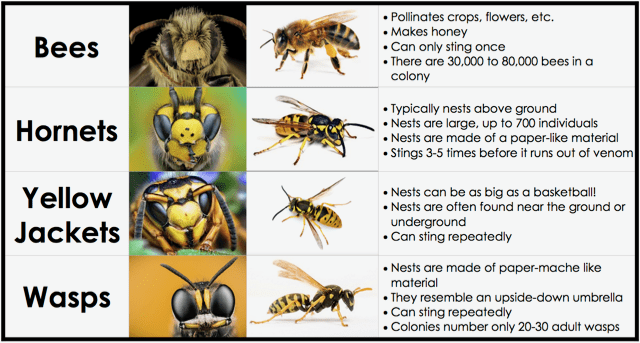 Baking soda and colloidal oatmeal are soothing to the skin and can be used during a bath or through medicated skin creams.
Baking soda and colloidal oatmeal are soothing to the skin and can be used during a bath or through medicated skin creams.
OTC pain relievers, such as ibuprofen, can manage pain associated with wasp stings.
Antihistamine drugs, including diphenhydramine and chlorpheniramine, can reduce itching as well. Take all medications as directed to avoid potential side effects, such as stomach irritation or drowsiness.
You should also consider getting a tetanus shot within several days of the sting if you haven’t had a booster shot in the last 10 years.
Vinegar
Vinegar is another possible home remedy that may be used for wasp stings. The theory is that the acidity of vinegar can help neutralize the alkalinity of wasp stings. The opposite is true of bee stings, which are more acidic.
To use vinegar on wasp stings, soak a cotton ball with apple cider or white vinegar and place it on top of the affected area of skin. Use slight pressure to help with the pain and inflammation.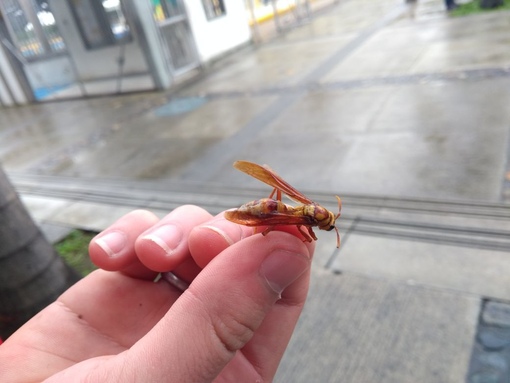 You can leave the cotton ball on top of your skin for several minutes.
You can leave the cotton ball on top of your skin for several minutes.
Severe reactions
Severe allergic reactions to wasp stings require immediate medical attention. Overall, up to 0.8 percent of children and 3 percent of adults have insect sting allergies.
If you have an EpiPen, administer it as soon as symptoms begin. If you have a history of wasp allergies, administer the EpiPen as soon as you’re stung and then call 911.
Treatment for severe allergic reactions to wasp stings can include:
- additional epinephrine to calm your immune system
- cardiopulmonary resuscitation (CPR) if breathing has temporarily stopped
- oxygen, steroids, or other medications to improve breathing
Wasp and bee stings can cause similar symptoms, but the treatment measures are slightly different. While a bee can only sting once because its stinger becomes stuck in the skin of its victim, a wasp can sting more than once during an attack. Wasp stingers remain intact.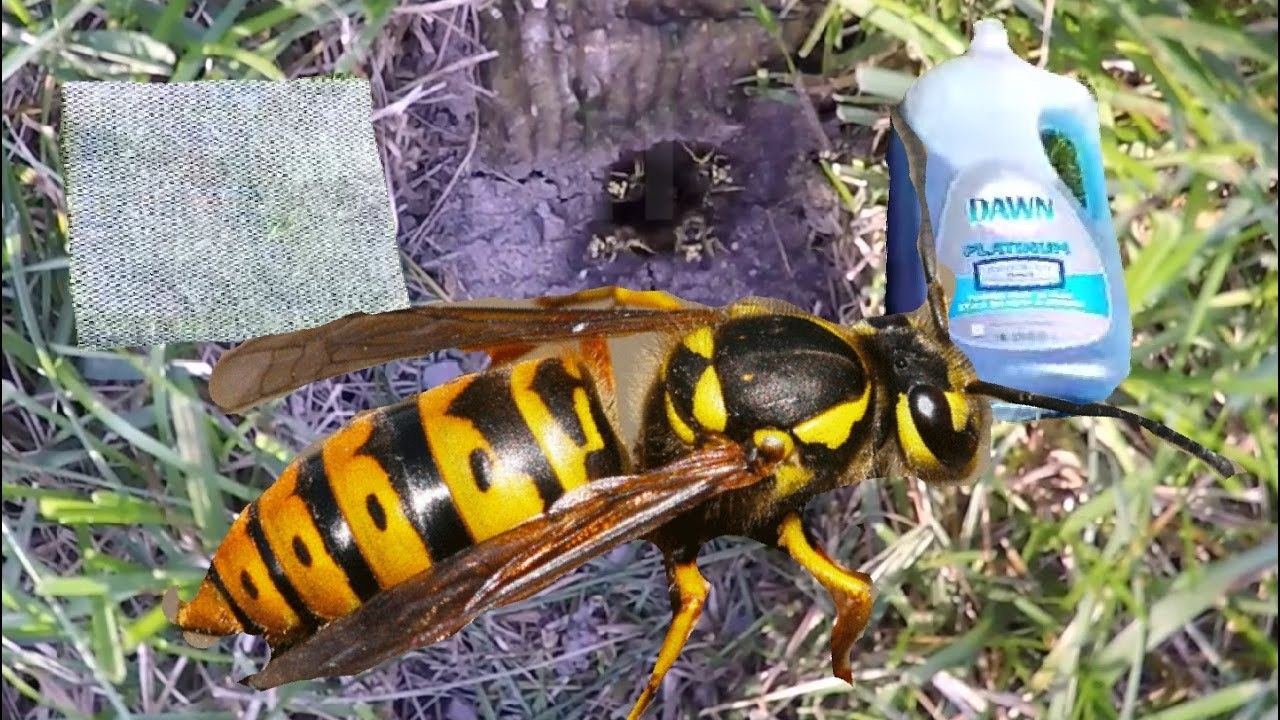
Unless you’re allergic, most bee stings can be treated at home.
You can remove the bee sting by swiping at the affected area of skin with your fingernail within 30 seconds of getting stung. You can reduce pain and swelling with cold compresses and an OTC medication such as ibuprofen.
If you have a known bee allergy, administer an EpiPen immediately and call 911. You should also see your doctor if an infection occurs. Symptoms include redness, increased swelling, and pus.
Wasp stings can occur at any life stage, including pregnancy. Unless you have a known venom allergy or have had local large reactions in the past, wasp stings aren’t a concern.
You can follow the same treatment measures as someone who isn’t pregnant, but avoid antihistamines containing decongestant ingredients.
While wasp stings alone won’t harm an unborn baby, a severe allergic reaction can. It’s important to use an EpiPen if needed and to call 911 if you’re experiencing anaphylaxis.
While bug bites and stings are often seen as a rite of passage during childhood, this doesn’t make them any less dangerous and uncomfortable. Toddlers are particularly vulnerable because they may not be able to fully verbalize that they’ve been stung by a wasp.
When your toddler is playing outside, be on the lookout for signs of a wasp sting and investigate the source of any tears and complaints immediately.
At a young age, you can teach your children about ways they can prevent wasp stings.
For example, you can show your child what wasps and their nests look like and how to avoid them. Other safety precautions include not walking barefoot outside and avoiding drinking out of sugary drinks that might be left outdoors, as these can attract insects.
In rare cases, wasp stings can contribute to complications involving the nervous system.
A report published in the Annals of Tropical Medicine and Public Health examined unusual cases in which a pediatric patient experienced muscle weakness, pupil dilation, and motor aphasia following a wasp sting.:max_bytes(150000):strip_icc()/how-do-i-know-which-kind-of-insect-i-was-stung-by-82828-5c4e3f1cc9e77c0001d7bae4.png)
Motor aphasia is the impairment of speech and writing abilities.
The patient’s reactions were brought on by a blood clot that was caused by a severe reaction to a wasp sting.
These particular complications are extreme and highly unlikely to occur.
Avoidance is key to preventing wasp stings. You can also talk to your doctor about venom immunotherapy, which is administered as allergy shots.
Reaction Symptoms, Treatments, and Remedies
We include products we think are useful for our readers. If you buy through links on this page, we may earn a small commission Here’s our process.
Healthline only shows you brands and products that we stand behind.
Our team thoroughly researches and evaluates the recommendations we make on our site. To establish that the product manufacturers addressed safety and efficacy standards, we:
- Evaluate ingredients and composition: Do they have the potential to cause harm?
- Fact-check all health claims: Do they align with the current body of scientific evidence?
- Assess the brand: Does it operate with integrity and adhere to industry best practices?
We do the research so you can find trusted products for your health and wellness.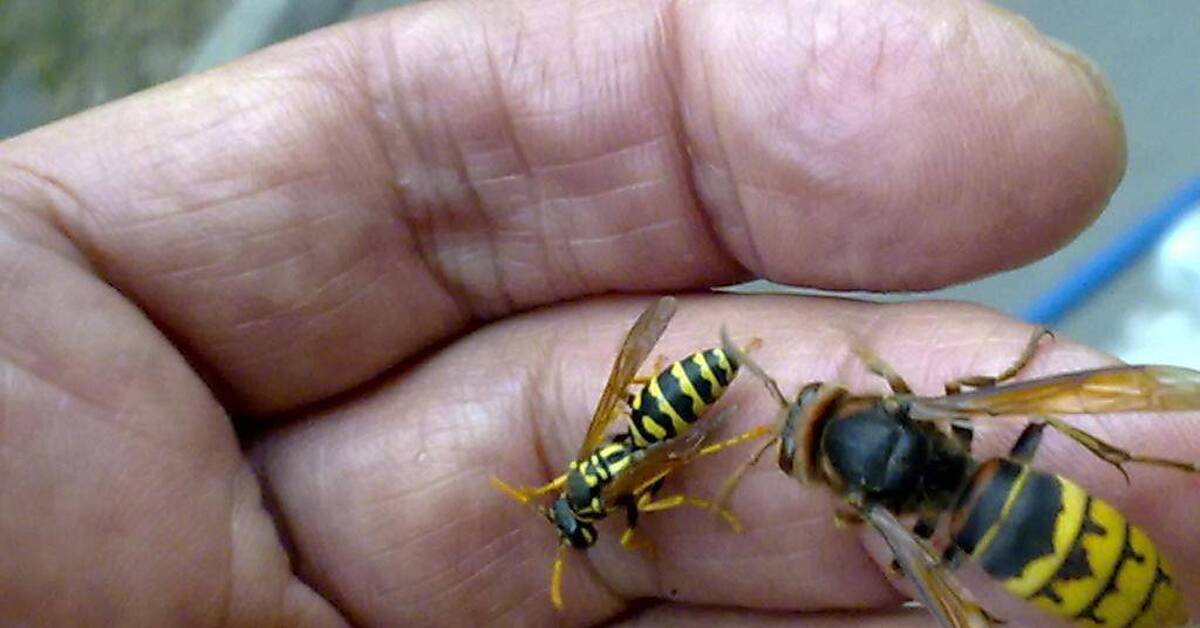
Read more about our vetting process.
Was this helpful?
A wasp sting typically results in an itchy welt. More severe symptoms can be a sign of an allergic reaction.
Wasp stings are common, especially during the warmer months when people are outside for longer periods of time. They can be uncomfortable, but most people recover quickly and without complications.
Wasps, like bees and hornets, are equipped with a stinger for self-defense. A wasp’s stinger contains venom (a poisonous substance) that’s transmitted to humans during a sting.
However, even without a lodged stinger, wasp venom can cause significant pain and irritation. It’s also possible to have a serious reaction if you’re allergic to the venom. In either case, prompt treatment is important for alleviating symptoms and complications.
The majority of people without sting allergies will show only minor symptoms during and after a wasp sting. The initial sensations can include sharp pain or burning at the sting site. Redness, swelling, and itching can occur as well.
Redness, swelling, and itching can occur as well.
Normal local reactions
You’re likely to develop a raised welt around the sting site. A tiny white mark may be visible in the middle of the welt where the stinger punctured your skin. Usually, the pain and swelling recedes within several hours of being stung.
Large local reactions
“Large local reactions” is a term used to describe more pronounced symptoms associated with a wasp or bee sting. People who have large local reactions may be allergic to wasp stings, but they don’t experience life-threatening symptoms, such as anaphylactic shock.
Large local reactions to wasp stings include extreme redness and swelling that increases for two or three days after the sting. Nausea and vomiting can also occur. Find out what’s happening in your body during an allergic reaction.
Most of the time, large local reactions subside on their own over the course of a week or so.
Let your doctor know if you have a large local reaction after a wasp sting. They may direct you to take an over-the-counter (OTC) antihistamine medication (such as Benadryl) to reduce your discomfort.
They may direct you to take an over-the-counter (OTC) antihistamine medication (such as Benadryl) to reduce your discomfort.
Having a large local reaction after a wasp sting one time doesn’t necessarily mean you’ll react to future stings in the same way.
You could have one strong reaction and never show the same symptoms again. However, a large local reaction could be the way your body routinely responds to wasp stings.
Try to avoid being stung to prevent these uncomfortable symptoms.
The most severe allergic reactions to wasp stings are referred to as anaphylaxis.
Anaphylaxis occurs when your body goes into shock in response to wasp venom. Most people who go into shock after a wasp sting do so very quickly. It’s important to seek immediate emergency care to treat anaphylaxis.
Symptoms of a severe allergic reaction to wasp stings include:
- severe swelling of the face, lips, or throat
- hives or itching in areas of the body not affected by the sting
- breathing difficulties, such as wheezing or gasping
- dizziness
- sudden drop in blood pressure
- lightheadedness
- loss of consciousness
- nausea or vomiting
- diarrhea
- stomach cramps
- weak or racing pulse
You may not experience all of these symptoms after a wasp sting, but you’re likely to experience at least some of them after a subsequent sting.
If you have a history of anaphylaxis, carry a kit in the event of a wasp sting.
“Bee sting kits” contain epinephrine injections (EpiPen) that you can give yourself after a wasp sting. Epinephrine has several effects that help stabilize the blood pressure, increase the heart rate and strength, and help respiration return to normal.
Anaphylactic shock is a medical emergency that requires immediate treatment. Learn more about this dangerous condition, including what to do if someone you know is experiencing it.
Mild to moderate reactions
You can treat mild and moderate reactions to wasp stings at home. While treating your sting at home, you should:
- Wash the sting area with soap and water to remove as much of the venom as possible.
- Apply a cold pack to the wound site to reduce swelling and pain.
- Keep the wound clean and dry to prevent infection.
- Cover with a bandage if desired.
Use hydrocortisone cream or calamine lotion if itching or skin irritation becomes bothersome.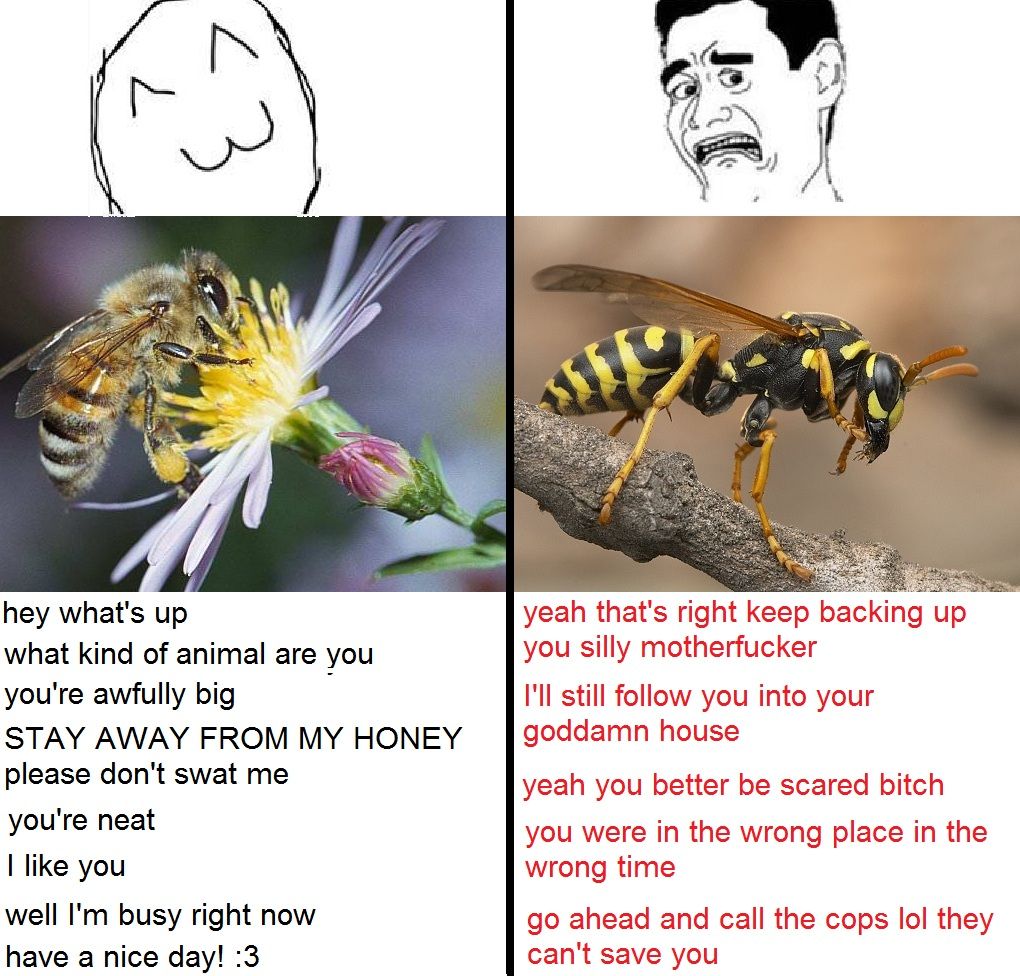 Baking soda and colloidal oatmeal are soothing to the skin and can be used during a bath or through medicated skin creams.
Baking soda and colloidal oatmeal are soothing to the skin and can be used during a bath or through medicated skin creams.
OTC pain relievers, such as ibuprofen, can manage pain associated with wasp stings.
Antihistamine drugs, including diphenhydramine and chlorpheniramine, can reduce itching as well. Take all medications as directed to avoid potential side effects, such as stomach irritation or drowsiness.
You should also consider getting a tetanus shot within several days of the sting if you haven’t had a booster shot in the last 10 years.
Vinegar
Vinegar is another possible home remedy that may be used for wasp stings. The theory is that the acidity of vinegar can help neutralize the alkalinity of wasp stings. The opposite is true of bee stings, which are more acidic.
To use vinegar on wasp stings, soak a cotton ball with apple cider or white vinegar and place it on top of the affected area of skin. Use slight pressure to help with the pain and inflammation. You can leave the cotton ball on top of your skin for several minutes.
You can leave the cotton ball on top of your skin for several minutes.
Severe reactions
Severe allergic reactions to wasp stings require immediate medical attention. Overall, up to 0.8 percent of children and 3 percent of adults have insect sting allergies.
If you have an EpiPen, administer it as soon as symptoms begin. If you have a history of wasp allergies, administer the EpiPen as soon as you’re stung and then call 911.
Treatment for severe allergic reactions to wasp stings can include:
- additional epinephrine to calm your immune system
- cardiopulmonary resuscitation (CPR) if breathing has temporarily stopped
- oxygen, steroids, or other medications to improve breathing
Wasp and bee stings can cause similar symptoms, but the treatment measures are slightly different. While a bee can only sting once because its stinger becomes stuck in the skin of its victim, a wasp can sting more than once during an attack. Wasp stingers remain intact.
Unless you’re allergic, most bee stings can be treated at home.
You can remove the bee sting by swiping at the affected area of skin with your fingernail within 30 seconds of getting stung. You can reduce pain and swelling with cold compresses and an OTC medication such as ibuprofen.
If you have a known bee allergy, administer an EpiPen immediately and call 911. You should also see your doctor if an infection occurs. Symptoms include redness, increased swelling, and pus.
Wasp stings can occur at any life stage, including pregnancy. Unless you have a known venom allergy or have had local large reactions in the past, wasp stings aren’t a concern.
You can follow the same treatment measures as someone who isn’t pregnant, but avoid antihistamines containing decongestant ingredients.
While wasp stings alone won’t harm an unborn baby, a severe allergic reaction can. It’s important to use an EpiPen if needed and to call 911 if you’re experiencing anaphylaxis.
While bug bites and stings are often seen as a rite of passage during childhood, this doesn’t make them any less dangerous and uncomfortable. Toddlers are particularly vulnerable because they may not be able to fully verbalize that they’ve been stung by a wasp.
When your toddler is playing outside, be on the lookout for signs of a wasp sting and investigate the source of any tears and complaints immediately.
At a young age, you can teach your children about ways they can prevent wasp stings.
For example, you can show your child what wasps and their nests look like and how to avoid them. Other safety precautions include not walking barefoot outside and avoiding drinking out of sugary drinks that might be left outdoors, as these can attract insects.
In rare cases, wasp stings can contribute to complications involving the nervous system.
A report published in the Annals of Tropical Medicine and Public Health examined unusual cases in which a pediatric patient experienced muscle weakness, pupil dilation, and motor aphasia following a wasp sting.
Motor aphasia is the impairment of speech and writing abilities.
The patient’s reactions were brought on by a blood clot that was caused by a severe reaction to a wasp sting.
These particular complications are extreme and highly unlikely to occur.
Avoidance is key to preventing wasp stings. You can also talk to your doctor about venom immunotherapy, which is administered as allergy shots.
Allergen i4 – wasp venom (Polistes spp.), IgE
Wasp venom is a very strong allergen. It contains enzymes and biologically active substances, including histamine, which can enhance the manifestations of an allergic reaction. Contact with this allergen occurs when a person is stung by a wasp (Polistes spp.). Allergy manifestations can be both local reactions in the form of allergic dermatitis, and general ones: urticaria, Quincke’s edema, anaphylactic shock. The determination of specific immunoglobulin E to this allergen in an increased amount indicates the presence of sensitization of the body to it.
Synonyms Russian
Paper wasp allergen.
Synonyms English
Paper Wasps (Polistes spp.), IgE (i4).
Test method
Immunochemiluminescent assay.
Units
IU/ml (international unit per milliliter).
What biomaterial can be used for research?
Venous blood.
How to properly prepare for an examination?
- Do not smoke for 30 minutes before the test.
General information about the study
Wasps and hornets are poisonous insects from the Hymenoptera family. Unlike bees, they have smooth stings and do not leave them in the skin after stinging, so they can sting several times.
Hymenoptera venom allergy is an IgE-mediated hypersensitivity reaction that can occur at any age after one or more stings. This is one of the main causes of anaphylactic reactions in adults and children in Europe and North America. The incidence of systemic allergic reactions is approximately 3% in the adult population, 1% in children under 17 years of age.
The incidence of systemic allergic reactions is approximately 3% in the adult population, 1% in children under 17 years of age.
Paper wasps ( Vespidae ) – a subfamily of the family of true wasps. They got their name due to the ability to build their nests from paper, which they make themselves by processing wooden fibers. The insect grinds wood, mixes it with its saliva and as a result gets paper, thin but very durable. The wasp uses it to build its nests. In shape, they are practically no different from bee honeycombs. More than a thousand species of paper bees are known. The halo of their habitat includes all continents, the largest number of species lives in South America and Asia. There are paper wasps in Russia too. The most common species are synagris, German, Austrian and French wasps.
Wasp venom contains many allergens, among which are described: phospholipase, antigen 5 and hyaluronidase, structurally identical to the allergens of poisons of other members of the family species.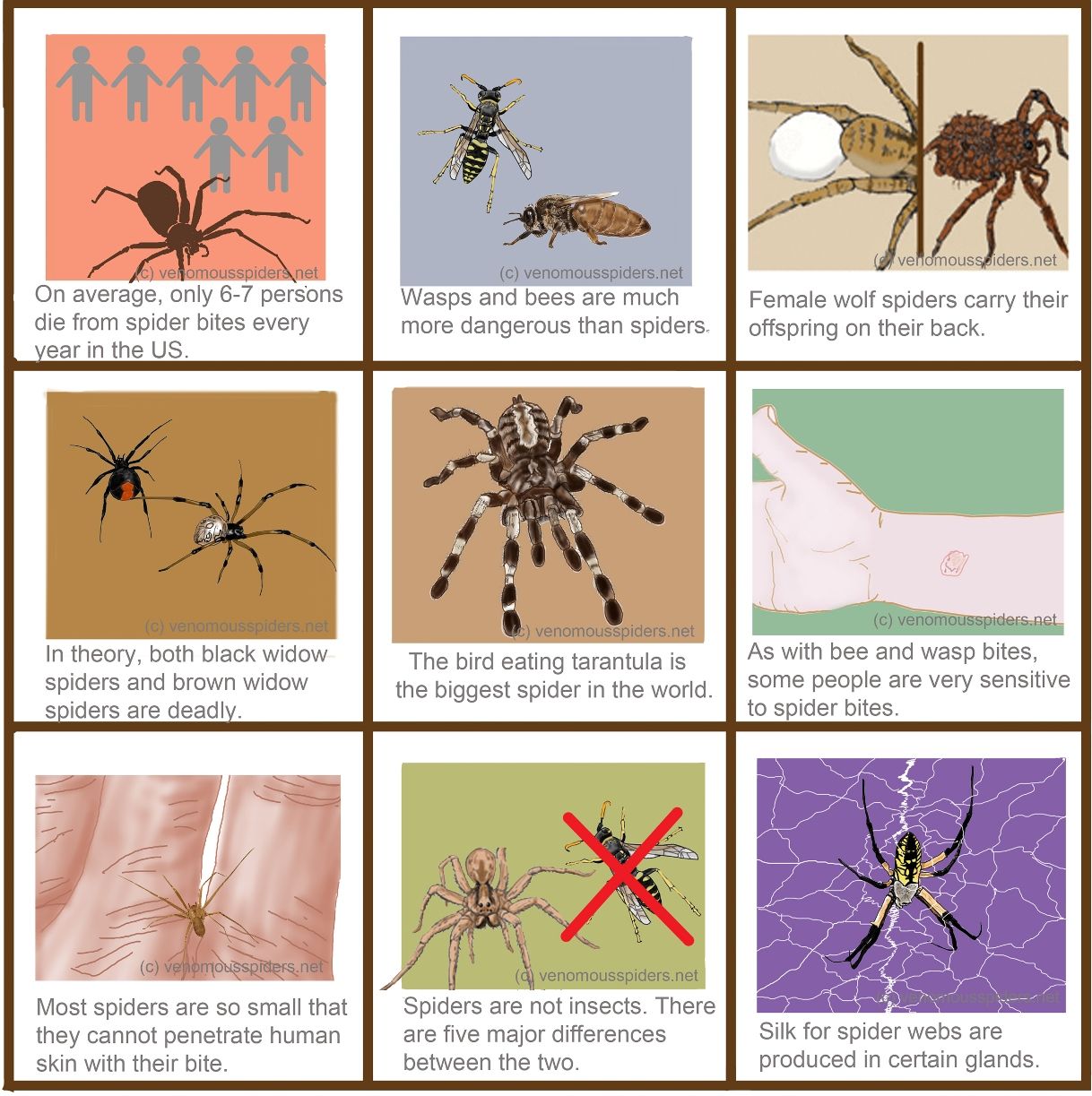
Allergic reactions are triggered by sensitization during the sting of a wasp or by the development of cross-sensitivity, in case of sensitization to allergens of poisons from other species of the Hymenoptera family.
Hypersensitivity reactions to stings range from local skin reactions in the form of swelling around the site of the sting, localized itching and pain to systemic manifestations in the form of fever, urticaria, laryngeal edema, bronchospasm and anaphylactic shock.
Sensitization to wasp venom allergens is confirmed by the determination of a high titer of specific IgE in the blood serum. Based on the results of the study, patients can be selected for specific immunotherapy with wasp venom.
What is this study used for?
- For the diagnosis of allergic diseases associated with sensitization to wasp venom.
When is the test ordered?
- With allergy symptoms (including the appearance of urticarial and papular rashes on the skin, swelling of mucous membranes, rhinitis, lacrimation, bronchospasm, an attack of bronchial asthma, etc.
 ) that occur immediately after a wasp sting or after a short time.
) that occur immediately after a wasp sting or after a short time.
What do the results mean?
Reference values: 0.00 – 0.10 IU/ml.
Reason for positive result:
- wasp venom hypersensitivity; sensitization to wasp venom with a high risk of developing an allergic reaction after being bitten.
Reasons for the negative result:
- no IgE sensitization to this allergen;
- prolonged restriction or exclusion of contact with the allergen.
- successful ASIT.
Important Notes
- Lack of sensitization to an allergen does not rule out allergy to other allergen sources. In some cases, further allergy testing may be required to clarify sensitization to other possible allergens.
- Performing this study is safe for the patient compared to skin tests (in vivo), as it eliminates the patient’s exposure to the allergen. Taking antihistamines and age characteristics do not affect the quality and accuracy of the study.

Also recommended
- Serum total immunoglobulins E (IgE)
- Allergen i70 – red ant, IgE
- Allergen i6 – Prussian cockroach, IgE
- Allergen i8 – mole, IgE
- Allergen i204 – horsefly, IgE
- Allergen i2 – hornet, IgE
- Allergen i3 – wasp venom (Vespula spp.), IgE
- Allergen i1 – bee venom, IgE
- ImmunoCAP ISAC Allergy Chip (112 Allergy Components)
Who orders the examination?
Allergist-immunologist, pediatrician, therapist, general practitioner.
Literature
- Pediatric Allergy: Principles and Practice, 18, 167-176.
- Henry’s Clinical Diagnosis and Management by Laboratory Methods, Chapter 55, 1057-1070.
- Detection of mosquito saliva – specific IgE and IgG 4 antibodies by immunoblotting. Henrikki Brummer-Korvenkontio, Pekka Lappalainen, Timo Reunala, Timo Palosuo.

- Nelson Textbook of Pediatrics, Chapter 146, 1121-1124.
- Hymenoptera Venom Allergy. Velma L. Paschall. Current Clinical Medicine, 28-33.
Bee and wasp stings
- Home
- Information about the government agency
- Public protection
Bees and wasps form an extensive group of the order Hymenoptera, which includes more than 20,000 species distributed on all continents except Antarctica.
Many species lead a synanthropic* way of life, some are cultivated by humans in order to obtain honey and as pollinators of plants. As a result, human contacts with bees and wasps occur more often than with other poisonous animals, and the number of poisonings with their poison far exceeds the number of intoxications caused by the bites of poisonous snakes.
* Synanthropic organisms, synanthropes – animals (not domesticated), plants and microorganisms whose lifestyle is associated with a person and his housing.
Bees and wasps have a highly specialized apparatus for the production, storage and administration of poison. The main parts of this apparatus are the venom glands and the sting at the end of the abdomen.
The venom of bees and wasps has a complex chemical composition and differs significantly from the poisons of other animals. Components with enzymatic activity play a secondary role in it. The main active principle is biologically active amines (histamine, serotonin, acetylcholine) and polypeptides, among which kinins, apamin and melitin are of the greatest importance. These substances have a wide spectrum of action on the most important systems of the human body, such as the nervous, neuromuscular, cardiovascular, respiratory, endocrine, and blood systems.
In central Russia, the stings of the honey bee, gadfly and hornet wasp are dangerous. The danger increases with the sting of several insects, especially for children. It is even more dangerous when the affected child is allergic.
When stinging, the bee releases 0.2-0.3 mg of poison. The nature and severity of the symptoms of poisoning with hymenoptera venom to a much greater extent than with poisons from other animals depend on the individual sensitivity of the victim to foreign proteins.
In most cases, when bees sting, only a local reaction is observed – pain, burning, swelling, local temperature increase. With multiple stings – weakness, dizziness, headache, chills, nausea, vomiting, fever. With increased sensitivity to poison, even one or more stings can cause a severe allergic reaction, in which hives, palpitations, pain in the lower back and joints, convulsions and loss of consciousness, fever, nausea, and vomiting are observed. Possible asthma attack, as well as anaphylactic shock *
*Anaphylactic shock is a severe, life-threatening pathological condition that develops upon contact with certain allergen antigens in a sensitized person. The term was introduced by Professor Bezredka Alexander Mikhailovich. The first symptom or even a harbinger of the development of anaphylactic shock is a pronounced local reaction at the site of the allergen entering the body – unusually severe pain, severe swelling, swelling and redness at the site of an insect bite or drug injection, severe itching of the skin, quickly spreading throughout the skin (generalized itching). When the allergen is taken orally, the first symptom may be a sharp pain in the abdomen, nausea and vomiting, swelling of the oral cavity and larynx. Expressed edema of the larynx, bronchospasm and laryngospasm quickly join, leading to a sharp difficulty in breathing. Difficulty breathing leads to the development of rapid, noisy, hoarse (“asthmatic”) breathing. Hypoxia develops. The patient becomes very pale, the lips and visible mucous membranes, as well as the distal ends of the limbs (fingers) may become cyanotic (bluish). In a patient with anaphylactic shock, blood pressure drops sharply and collapse develops. The patient may lose consciousness or faint.
The first symptom or even a harbinger of the development of anaphylactic shock is a pronounced local reaction at the site of the allergen entering the body – unusually severe pain, severe swelling, swelling and redness at the site of an insect bite or drug injection, severe itching of the skin, quickly spreading throughout the skin (generalized itching). When the allergen is taken orally, the first symptom may be a sharp pain in the abdomen, nausea and vomiting, swelling of the oral cavity and larynx. Expressed edema of the larynx, bronchospasm and laryngospasm quickly join, leading to a sharp difficulty in breathing. Difficulty breathing leads to the development of rapid, noisy, hoarse (“asthmatic”) breathing. Hypoxia develops. The patient becomes very pale, the lips and visible mucous membranes, as well as the distal ends of the limbs (fingers) may become cyanotic (bluish). In a patient with anaphylactic shock, blood pressure drops sharply and collapse develops. The patient may lose consciousness or faint. Anaphylactic shock develops very quickly and can lead to death within minutes or hours after the allergen enters the body.
Anaphylactic shock develops very quickly and can lead to death within minutes or hours after the allergen enters the body.
There is no antitoxic serum against bee and wasp venom.
The leading role in the pathogenesis of poisoning is the defeat of the central nervous system, therefore, stings in the head area are especially dangerous.
Stinging in the oral cavity is very dangerous because swelling of the larynx and suffocation may occur, so medical attention is required immediately. Before the doctor arrives, with swelling of the larynx, you should apply cold to the neck and ask the victim to open his mouth as wide as possible and stick out his tongue.
Do not hesitate to seek medical help even when you experience:
– Significant swelling in and around the sting;
– pus in places of stings;
– swelling of the lymph nodes;
– high temperature persists even a few days after the sting, drowsiness and headaches do not disappear.
First, try to remove the stinger. The wasp has a needle-shaped sting, while the bee has barbed needles. The sting must be removed completely and carefully: if part of it remains under the skin, the wound will heal for a long time. Tweezers rubbed with alcohol or cologne are best suited for these purposes.
Secondly, apply a cotton swab moistened with potassium permanganate, alcohol, cologne, ammonia (1 part alcohol to 5 parts water) to the sting site. Then apply a cold compress.
Thirdly, it is necessary to drink more liquid – it is necessary to neutralize the harmful substances that have entered the body along with insect venom.
With a single sting of a bee or wasp away from home, a folk remedy will help: you need to thoroughly rub (or chew) a plantain leaf in your palms and rub it into the bite site. Burning and redness should disappear after 10-15 minutes.
You should not approach wasp nests and beehives without protective nets and overalls.

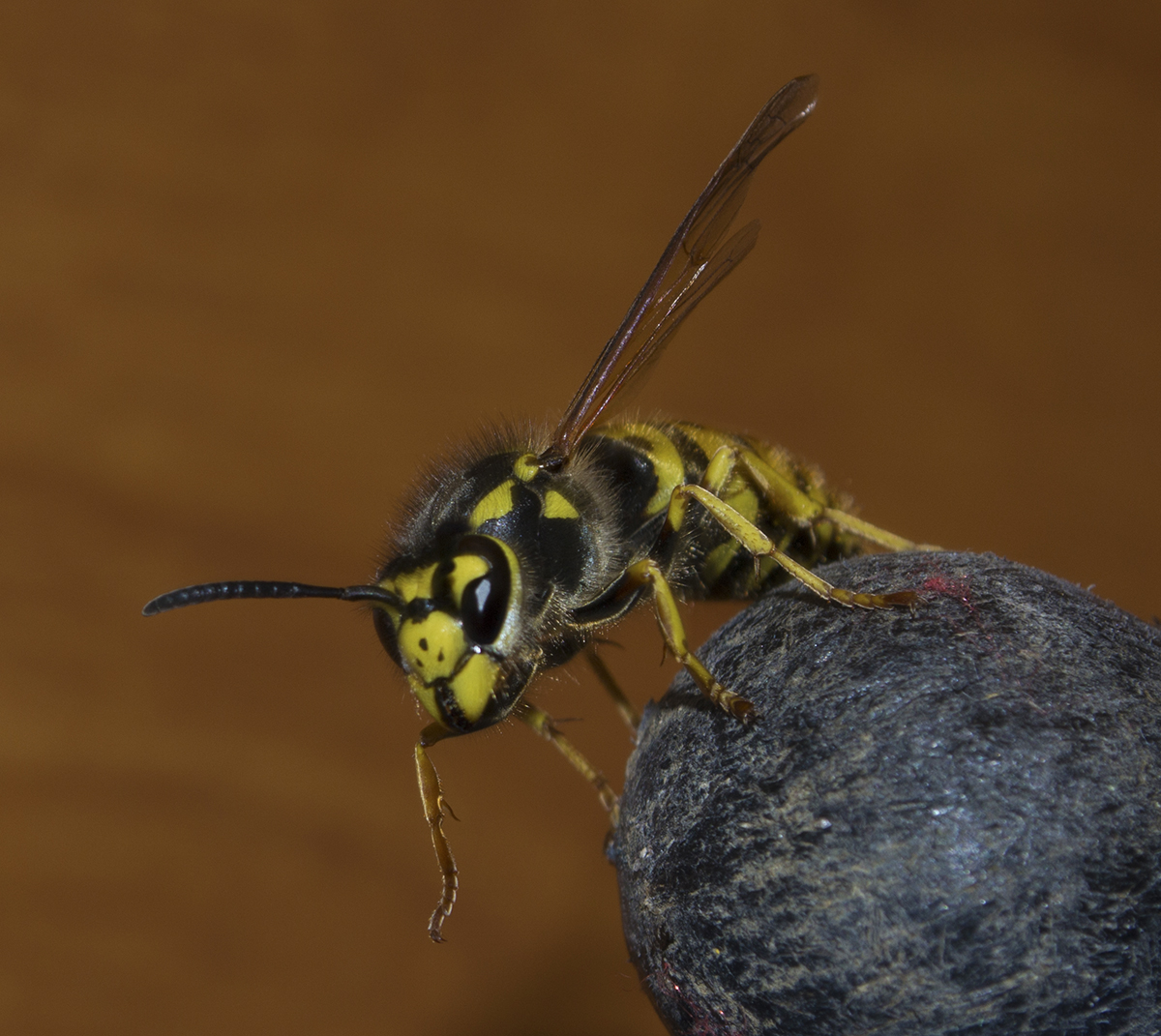 ) that occur immediately after a wasp sting or after a short time.
) that occur immediately after a wasp sting or after a short time.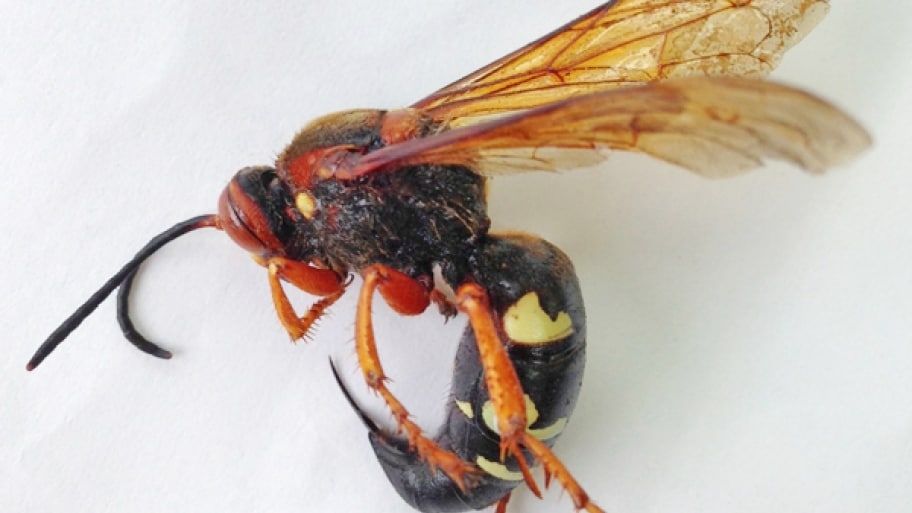
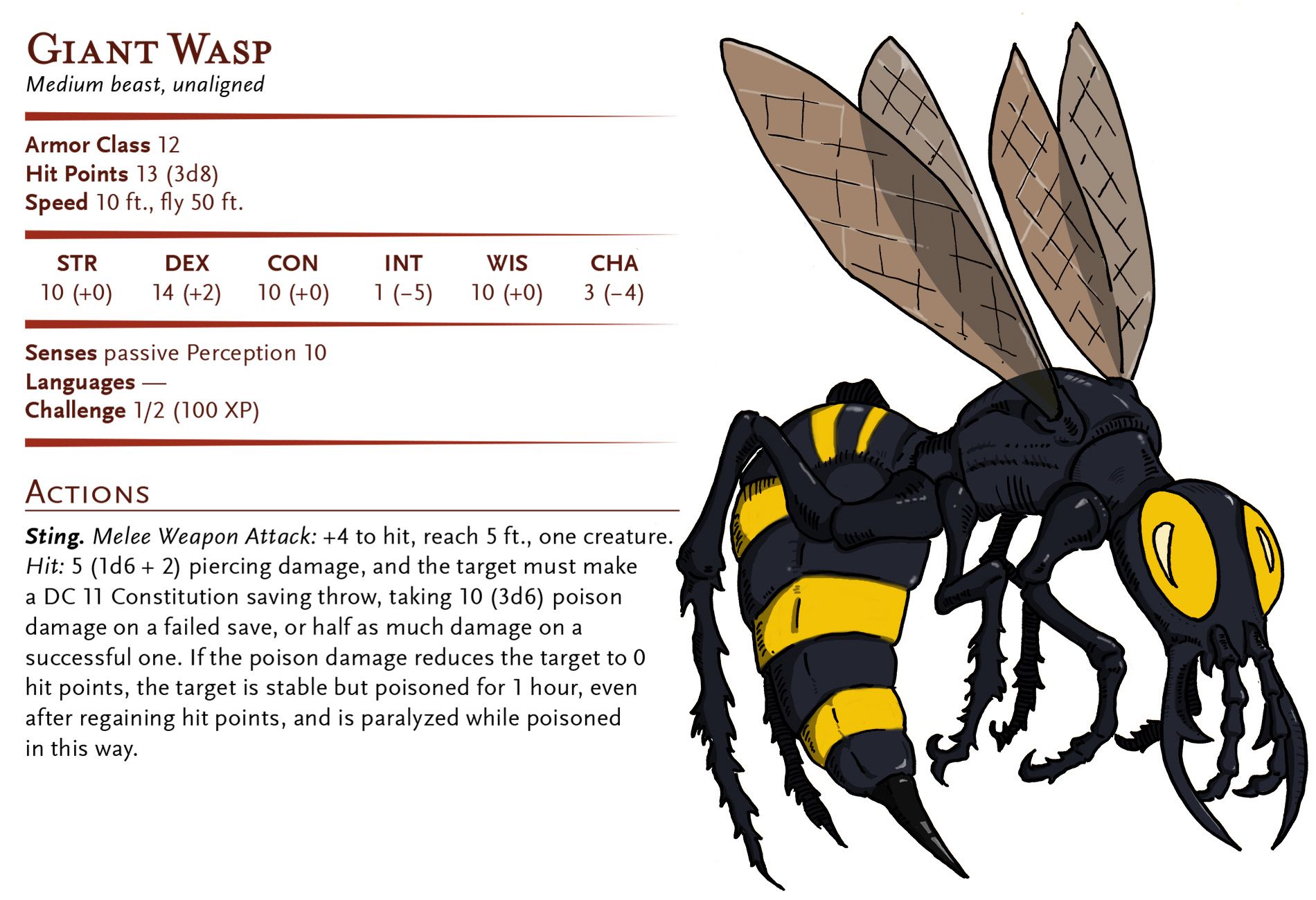
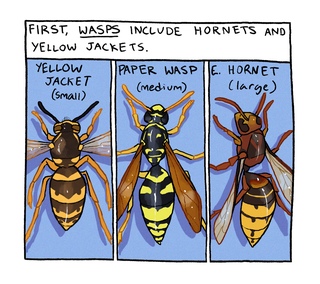
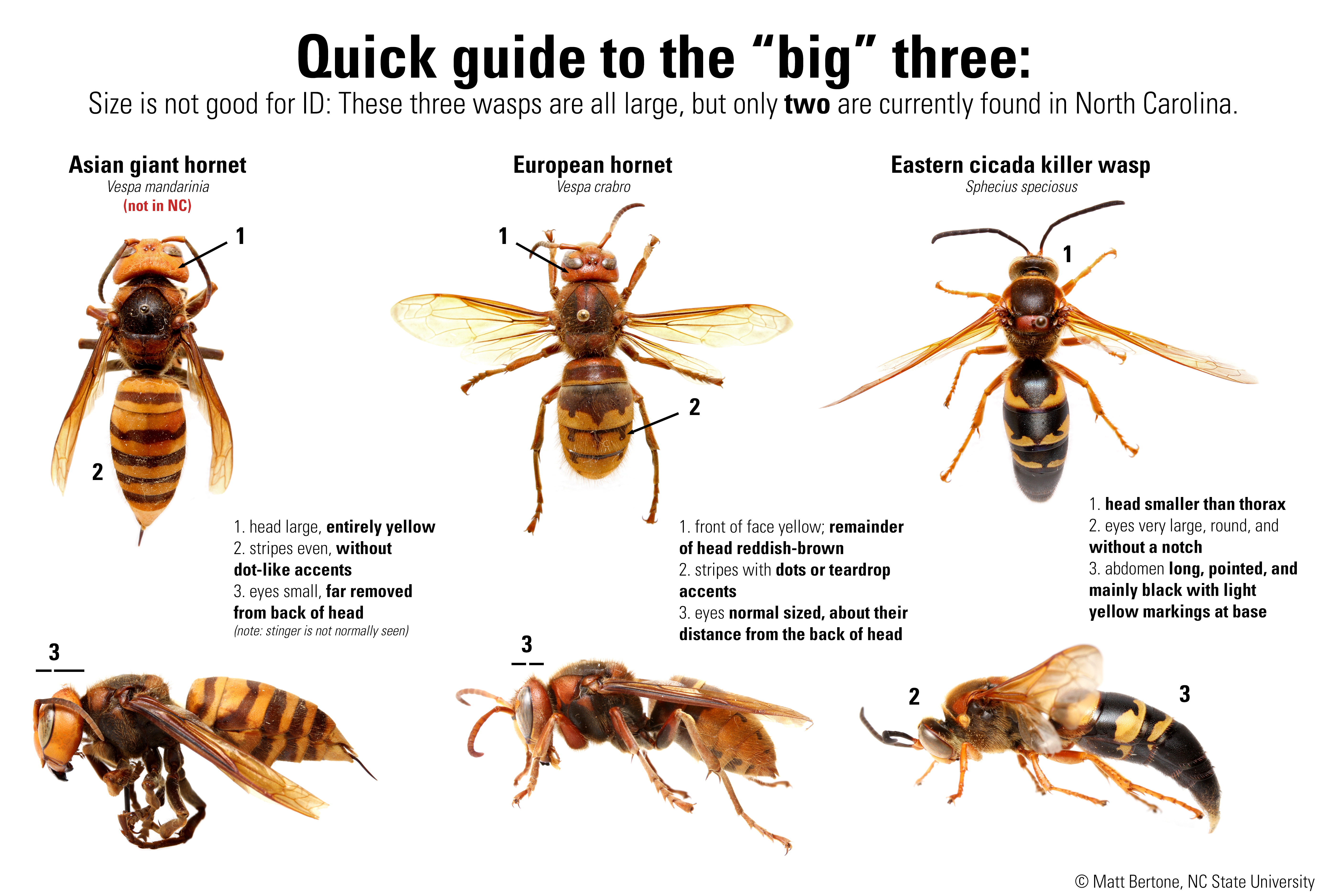
 The first symptom or even a harbinger of the development of anaphylactic shock is a pronounced local reaction at the site of the allergen entering the body – unusually severe pain, severe swelling, swelling and redness at the site of an insect bite or drug injection, severe itching of the skin, quickly spreading throughout the skin (generalized itching). When the allergen is taken orally, the first symptom may be a sharp pain in the abdomen, nausea and vomiting, swelling of the oral cavity and larynx. Expressed edema of the larynx, bronchospasm and laryngospasm quickly join, leading to a sharp difficulty in breathing. Difficulty breathing leads to the development of rapid, noisy, hoarse (“asthmatic”) breathing. Hypoxia develops. The patient becomes very pale, the lips and visible mucous membranes, as well as the distal ends of the limbs (fingers) may become cyanotic (bluish). In a patient with anaphylactic shock, blood pressure drops sharply and collapse develops. The patient may lose consciousness or faint.
The first symptom or even a harbinger of the development of anaphylactic shock is a pronounced local reaction at the site of the allergen entering the body – unusually severe pain, severe swelling, swelling and redness at the site of an insect bite or drug injection, severe itching of the skin, quickly spreading throughout the skin (generalized itching). When the allergen is taken orally, the first symptom may be a sharp pain in the abdomen, nausea and vomiting, swelling of the oral cavity and larynx. Expressed edema of the larynx, bronchospasm and laryngospasm quickly join, leading to a sharp difficulty in breathing. Difficulty breathing leads to the development of rapid, noisy, hoarse (“asthmatic”) breathing. Hypoxia develops. The patient becomes very pale, the lips and visible mucous membranes, as well as the distal ends of the limbs (fingers) may become cyanotic (bluish). In a patient with anaphylactic shock, blood pressure drops sharply and collapse develops. The patient may lose consciousness or faint. Anaphylactic shock develops very quickly and can lead to death within minutes or hours after the allergen enters the body.
Anaphylactic shock develops very quickly and can lead to death within minutes or hours after the allergen enters the body.